“Back to the Grimoire” is an exploration of occultism, culture, and spirituality by emerging artists who seek to challenge conventions of the monotheistic. Curated by Lex Barrie and exhibiting at Propeller Art Gallery, an artist-run centre on Abell St. just south of Queen Street West, “Grimoire” questions the depths of unconventionality and what it means to exist outside of social acceptance, whilst offering insight into the perspectives of local, up-and-coming talent. Although works that explore outsider identities are not new, “Grimoire” is refreshing in its focus on emerging artists-creators who are still outsiders within the art world – and its intertwinement with occultism, which has been historically demonized and misunderstood.
Installation view of Back to the Grimoire
Upon entering the gallery, I am met with the ethereality of Kenneth St. Onge’s “Mandala Inner Realms,” a large acrylic emulsion piece facing the front entrance. Self-described as a depiction of “hidden worlds and mystical realms where dreams are made and born” (St. Onge), the piece resembles moon phases yet represents a rather abstract though hopeful idea of the human unknown. Compared to the demonic imagery and deviousness wrongfully attributed to occultism, “Mandala Inner Realms” shimmers elegantly beneath the gallery light, welcoming visitors to challenge their own preconceptions and indulge in the narratives once and otherwise unfamiliar. However, as “Mandala Inner Realms” draws me in, I lock gazes with the watery eyes of Danielle Vincent’s “What else is left in the world,” which encompasses the emotional experiences of exploring the unknown: fearful, vulnerable, yet willing. Here, Vincent’s work echoes the doubts visitors may have with pursuing these narratives but recognizes the innate human strength to push through, while St. Onge’s work reminds us of the possibilities hidden within the unknown.
Kenneth St. Onge, Mandala Inner Realms, acrylic emulsion, 30 x 30 inches
Danielle Vincent, What else is left in the world, oil on canvas paper, 12 x 9 inches
Ultimately, venturing into the unknown is at the core of “Grimoire.” From a religious standpoint, the exhibition seeks to emphasize the cultures and spiritualities that deviated from monotheism and were forcibly erased by society as a result. As such, there are discernable reimaginations of gods and deities within prominent female figures. The woman of Stacy Athena May’s graphite drawings, “She Who Sees Boundlessly (Into that Which Lies Beyond)” and “Strange Aeons,” acts as a transitional almighty being that differs from the patriarchal nature of traditional doctrine. Nicola Jacobson’s embroidery pieces, “Sainte-Horse” and “Priestess of the Ram,” further explore these hypocrisies through their medium. While needlework once represented the domestic nature of womanhood, Jacobson reclaims embroidery’s artistic merit to overcome the roles once predetermined for women within society and religion. Likewise, “Desire” by Riley McGinley sees the artist reinterpreting her own Catholic influences to create what she describes as her own “God-like figure,” bringing acceptance to ideas of spirituality that are not dictated by tradition.
Stacy Athena May, She Who Sees Boundlessly (Into that Which Lies Beyond), graphite on paper, 14 x 11 inches
Nicola Jacobson, Priestess of the Ram, hand embroidery on cotton muslin, watercolour paint, wooden hoop painted in acrylic with synthetic suede cord, 10 x 8.5 x 0.5 inches
Riley McGinley, Desire, oil on canvas, 36 x 48 x 1.5 inches
Other artists utilize their cultural precedents to resist the dominance of Western belief systems and the colonialism it associates with. Dijana Bogdanovic’s three mosaics – “Fire Serpent,” “The Sun,” and “Hummingbird”- acknowledge the ancestry of occultism and mystique in their culture by representing drawings from ancient Mexico. “Thangka God of Fortune” by Sherry Tu and Carin Katagiri Mahon’s “The Namahage” are rooted in Tibetan and Japanese culture, respectively. Tu centers her work around a prominent figure of traditional Buddhist artwork and honors the similarities between a thangka (Tibetan Buddhist painting) and Chinese scroll paintings. “The Namahage” is a Japanese spirit within folklore that defies the conventions of beautiful god-like figures often depicted in religious European art. Andrew LaRocque’s “Invokation” paints Qaballah and witchcraft motifs from their indigenous heritage onto birch bark to defy both colonial narratives and the canvas – offering alternatives to the dominating factors of spirituality and art.
and Carin Katagiri Mahon, The Namahage, acrylic on wood panel, 12 x 8 x 7/8 inches
Andrew LaRocque, Invokation, mixed media, 58 x 48 inches
While the first half of the gallery sees interrogations of the past, dissections of the contemporary, and queries about what the future holds for narratives previously obscured, the second half pushes for acceptance and change. Azzara Nincevic’s “cleanse” boldly portrays a journey of self-acceptance inspired by the Old Testament tale of Seraphim burning away Isaiah’s belief of being unworthy. Between the dancing shadows and the peace of our central figure, embracing the fire as a force of purity, anguished faces represent the conflict of self-confrontation necessary for new growth. José María Mancia’s black and white photographic works, “tenebris” and “umbra,” capture the breaking of dawn in a liminal way. Using the camera, Mancia preserves a period of transition while stripping it of colour to transform a mundane and common experience into something new.
Azzara Nincevic, cleanse, acrylic and oil on canvas, 24 x 30 inches
José María Mancía, tenebris, silver halide print, 11 x 14 inches
On the surface, “Grimoire” simply intends to “encourage tellings of the unconventional” (Barrie), but a closer inspection reveals conventions to be challenged – bigger questions about outsider identity and what it means to exist in unaccommodating conditions. Propeller’s devotion to art accessibility, removing the prestige from “white cube” galleries with its smaller, dual-wall setting and artist-run ethos, is very fitting for an exhibition that attempts to pave the way for unheard narratives to be shared.
Tiffany Duong
Images are courtesy of Propeller Art Gallery.
*Exhibition information: Back to the Grimoire, The Emerging Artists of the Occult / Group show, February 14 – March 3, 2024, 30 Abell St, Toronto. Gallery hours: Wed – Sat, 1 – 5:30pm, Sun 12 – 4pm.

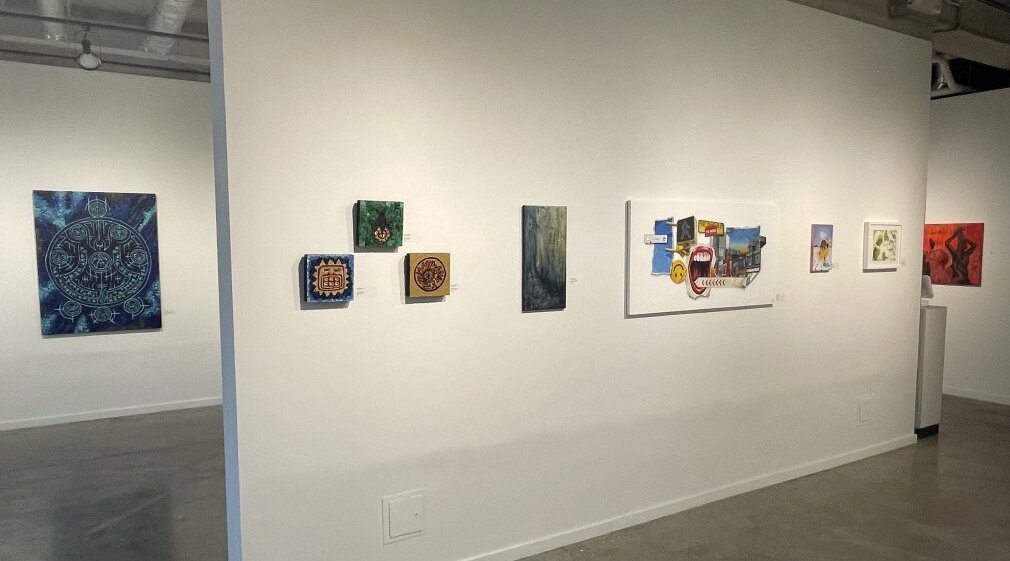
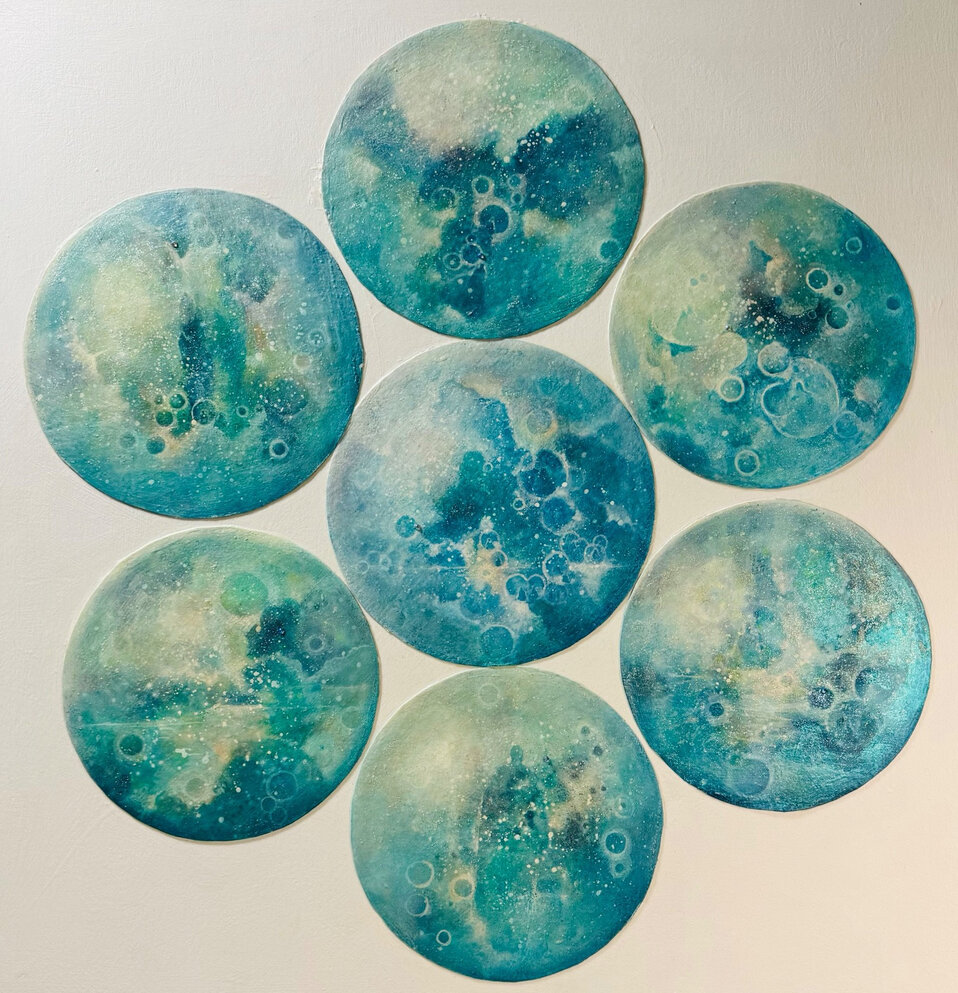
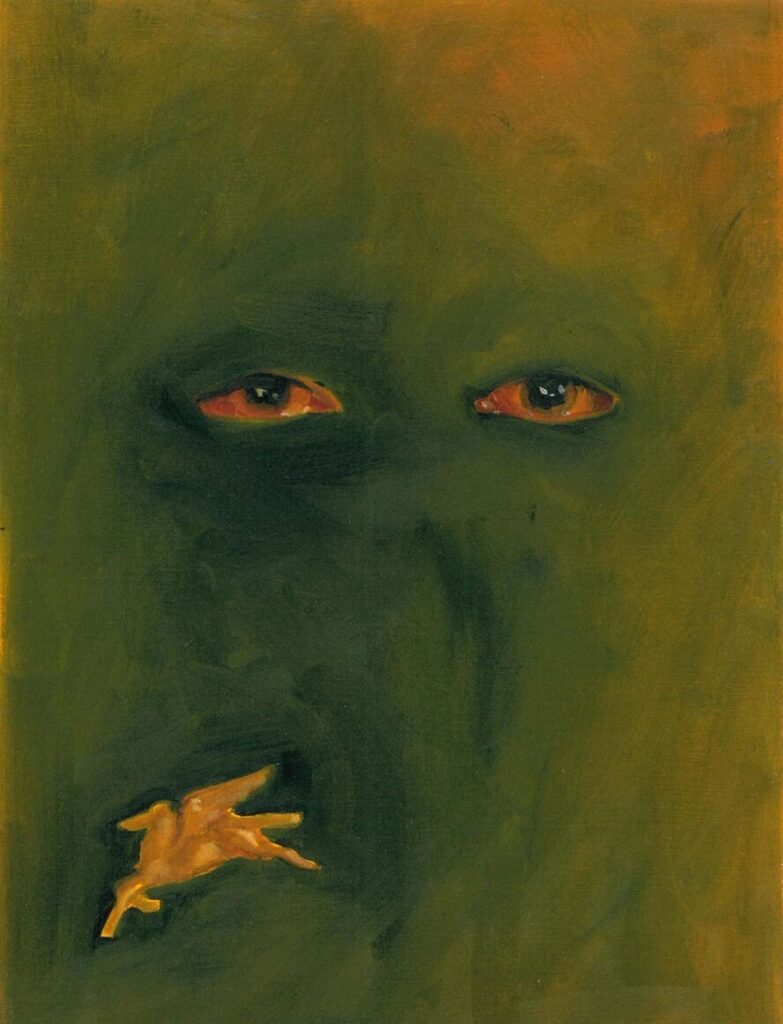
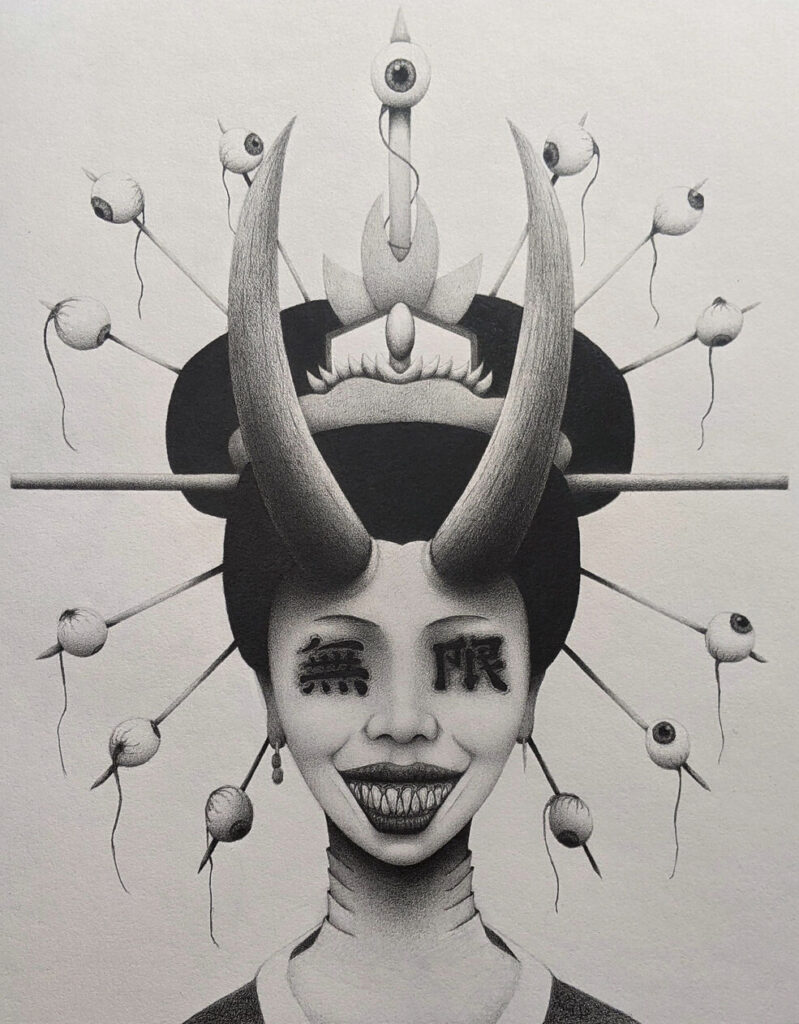
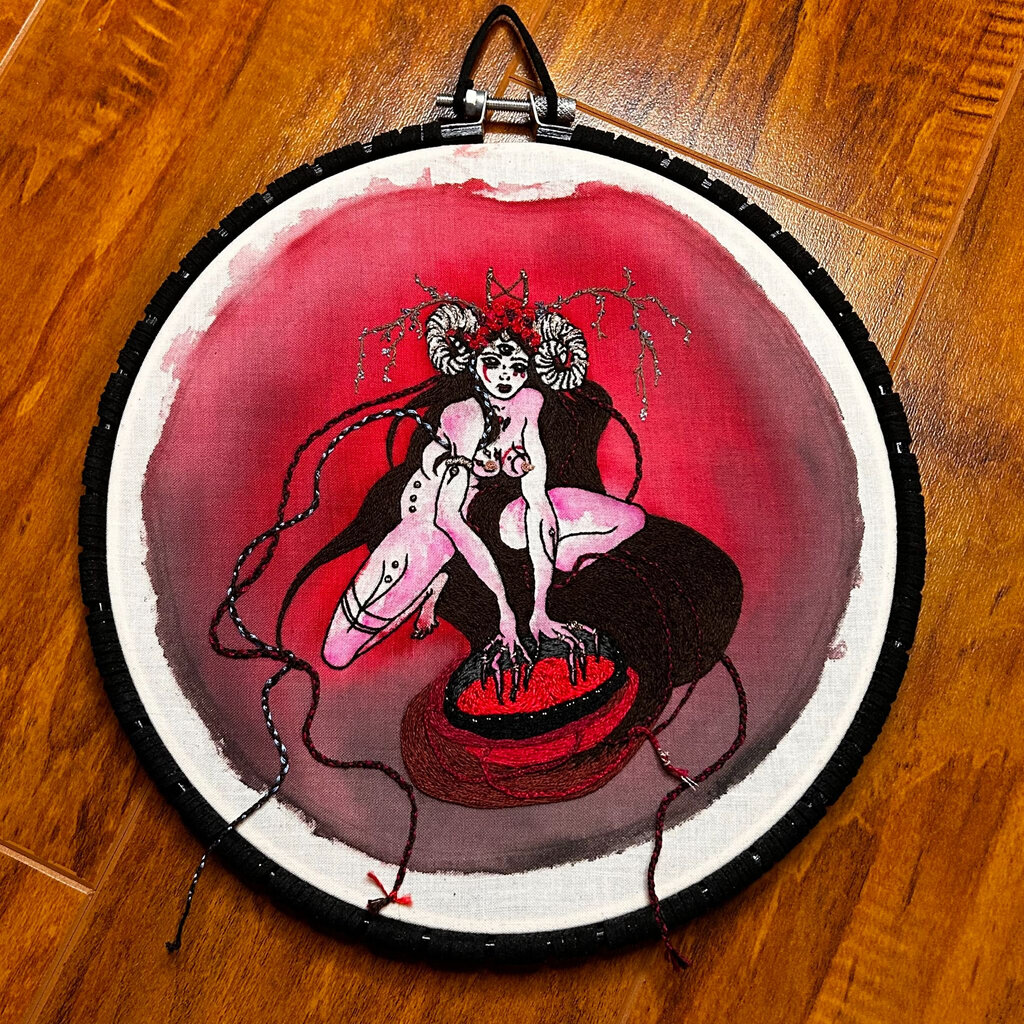
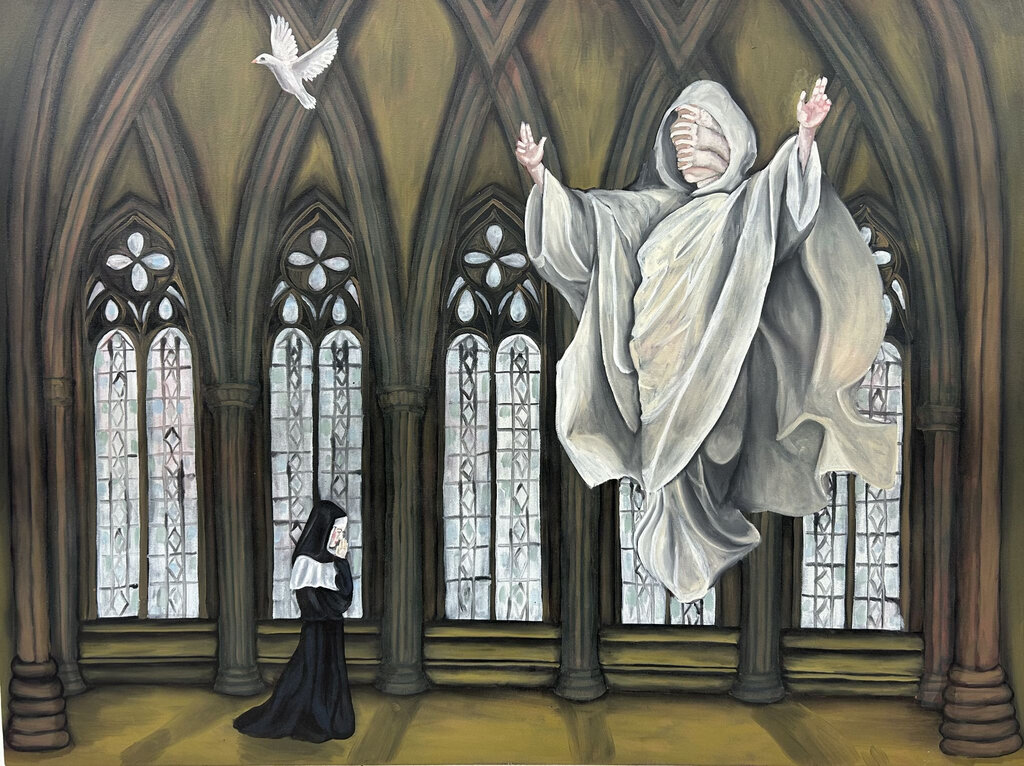
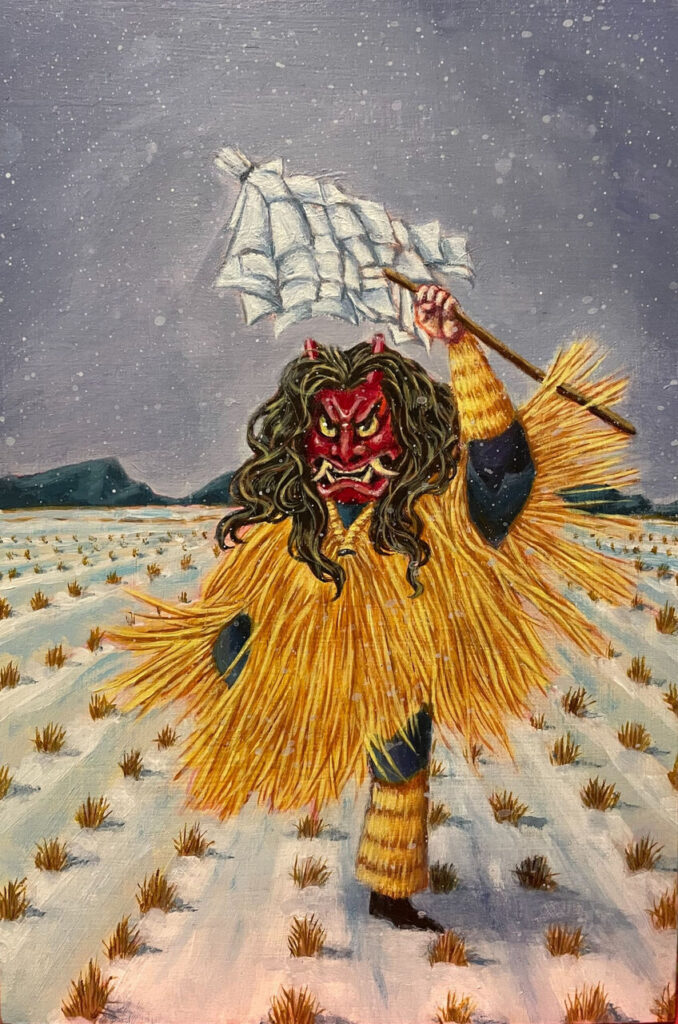
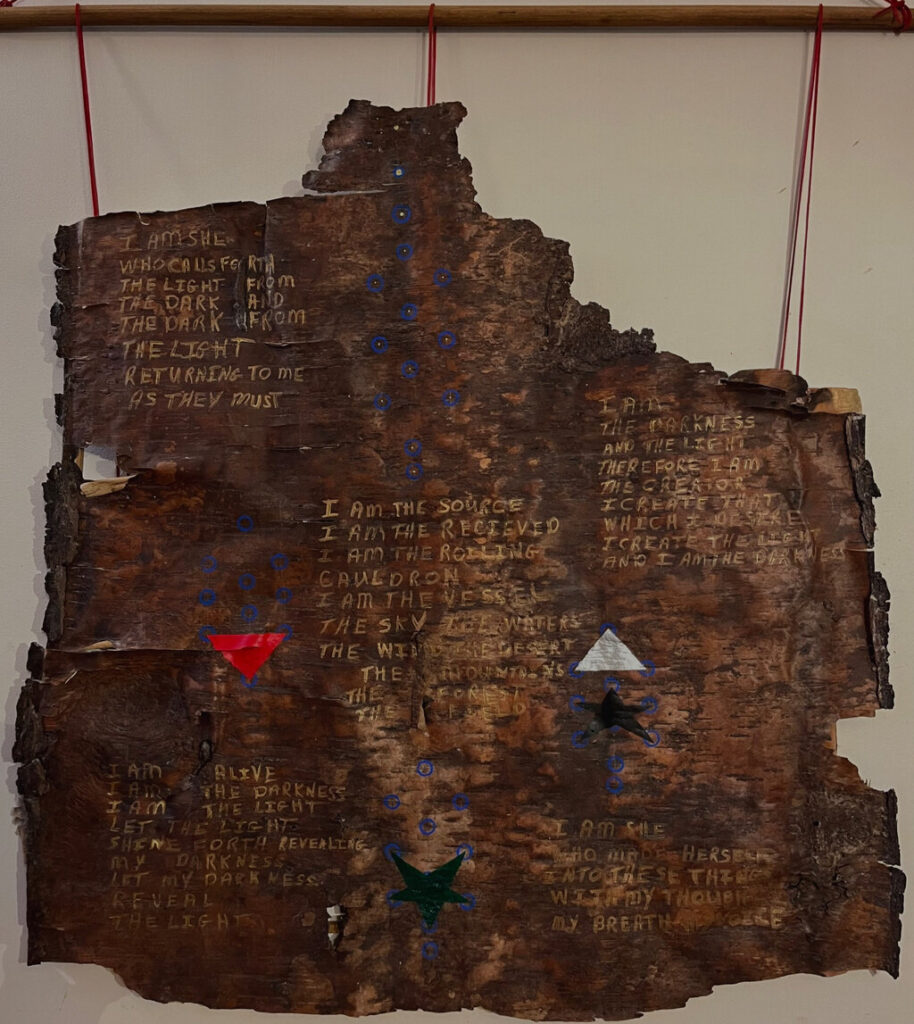
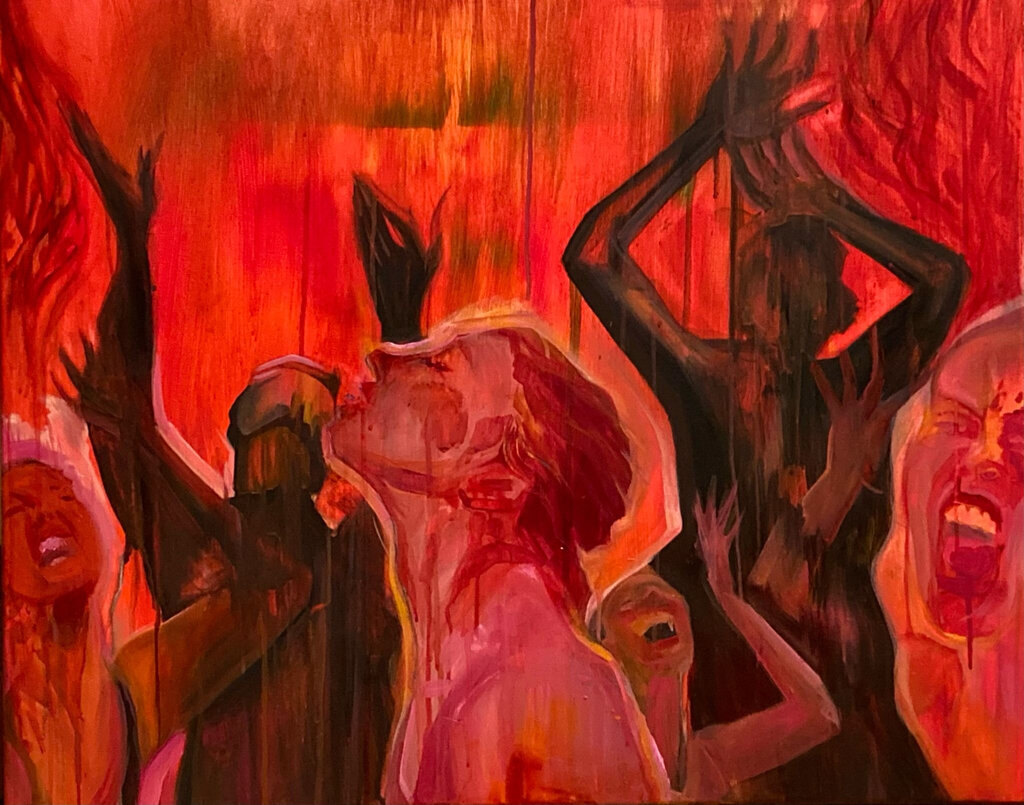
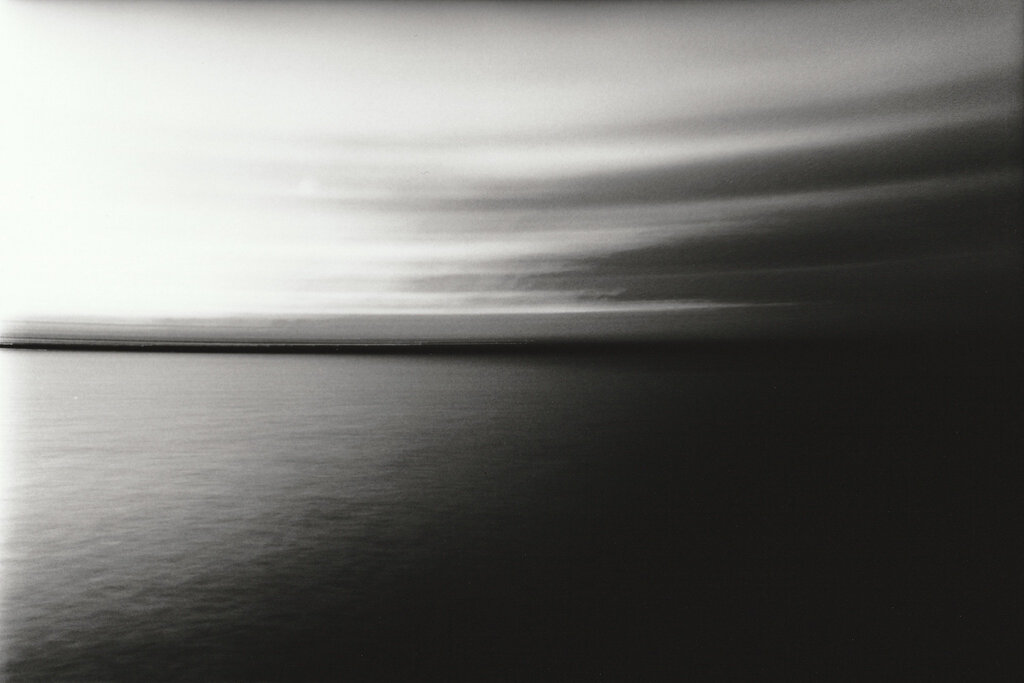
A wonderful review of the show at Propeller. Exceptionally well written article. The show leaves lots to think about! Thank your Tiffany!